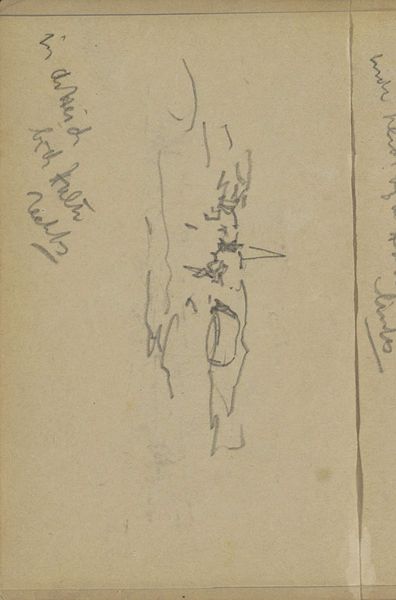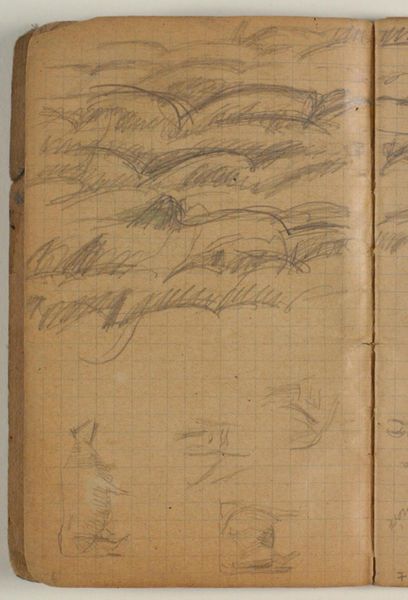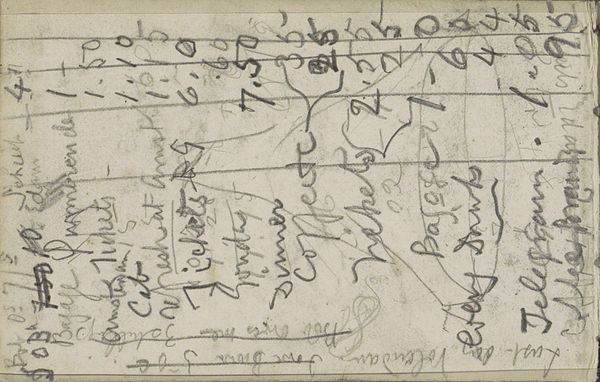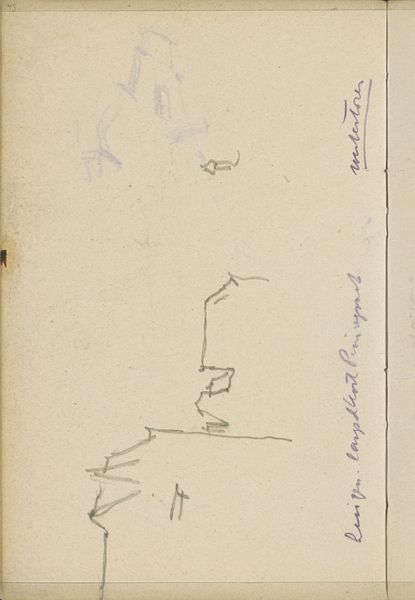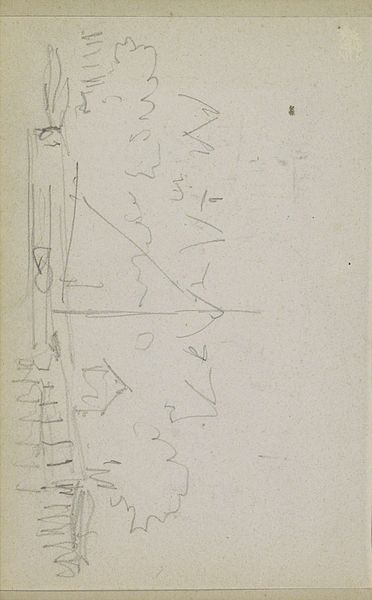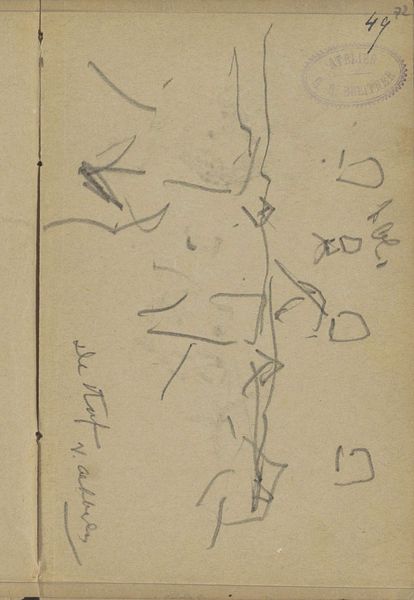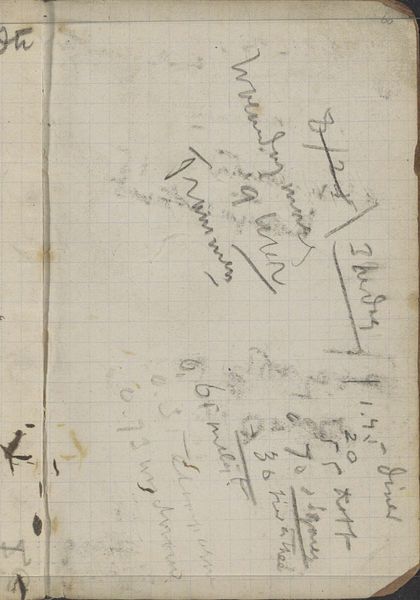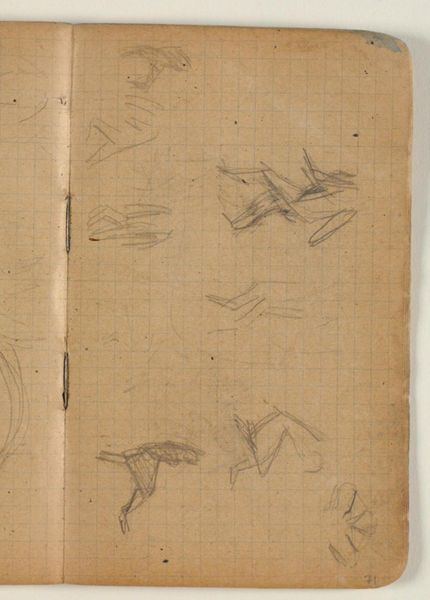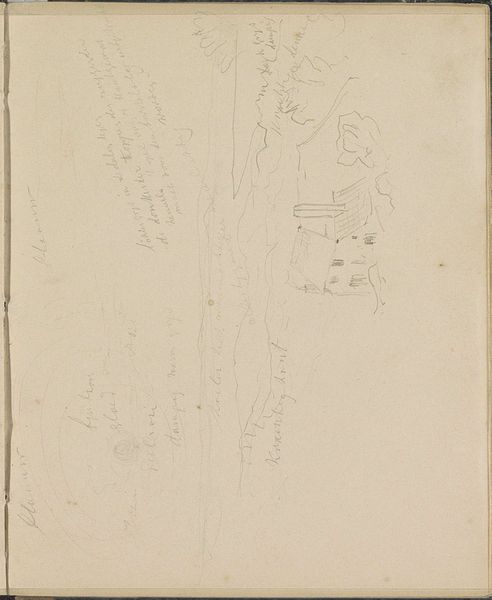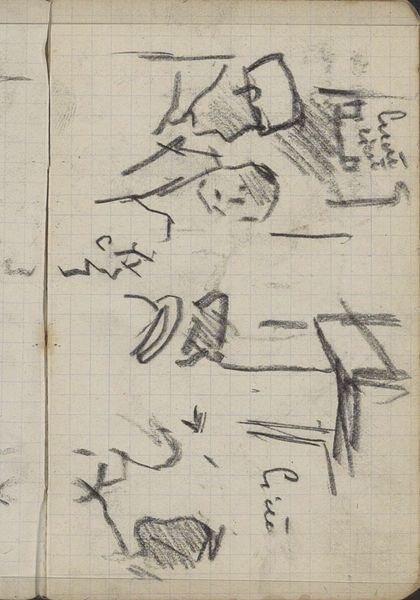
Copyright: Rijks Museum: Open Domain
Editor: So, here we have George Hendrik Breitner's "Studies en annotaties" from 1893, a mixed-media drawing. Looking at this sketchbook page, with its graphite and pencil marks on paper, it feels like a glimpse into the artist's raw, unfiltered thought process. What strikes you most about it? Curator: The interesting thing to me is how Breitner uses readily available, mass-produced materials – the cheap paper, graphite, and pencil – as tools for artistic investigation. Notice the grid of the paper; it's a pre-printed, utilitarian support, a far cry from a stretched canvas. It makes you wonder: what social conditions made this kind of artistic practice possible? What does this choice of materials say about Breitner's position in the art world, and more broadly, his world in Amsterdam? Editor: That’s a good point. It's like he's democratizing art, right? Ditching the fancy materials for everyday ones. Curator: Precisely! And consider the labour involved. He isn't employing assistants to grind pigments or prepare canvases. This is direct, immediate, almost a form of artistic note-taking. What do these rapidly executed strokes signify when you think about labour? Editor: It’s very different from, say, meticulously layering paint for a finished artwork. This feels much more immediate, almost disposable. It questions the idea of what is ‘finished’ and what constitutes a valuable artistic product, doesn’t it? Curator: Exactly. Breitner's "Studies en annotaties" prompts us to consider how art-making itself is tied to its social and economic context. The material choices aren't just aesthetic decisions. It's almost an implicit rejection of art as purely luxury or craftsmanship. Are we seeing early signs of a modern rethinking of how art is consumed? Editor: This has really opened my eyes. I was just seeing a sketchbook, but you've shown me how even the simplest materials and sketches can reflect broader societal values and the changing role of the artist. Curator: And how the value we assign to the ‘finished’ artwork might need rethinking as artistic practices engage more openly with the conditions of labour.
Comments
No comments
Be the first to comment and join the conversation on the ultimate creative platform.
